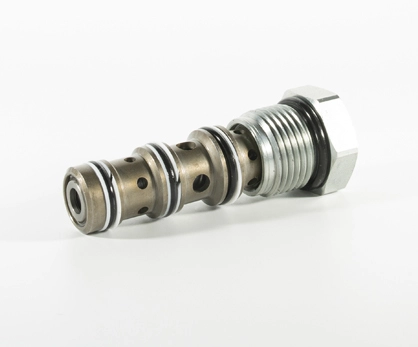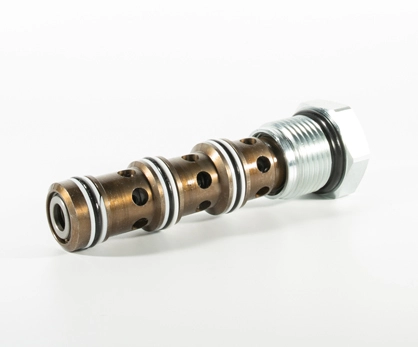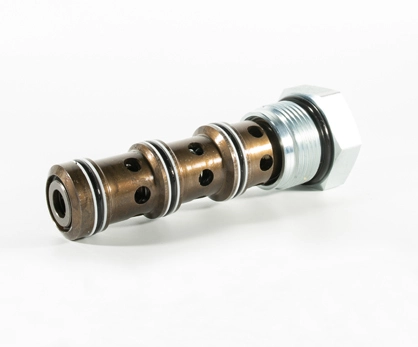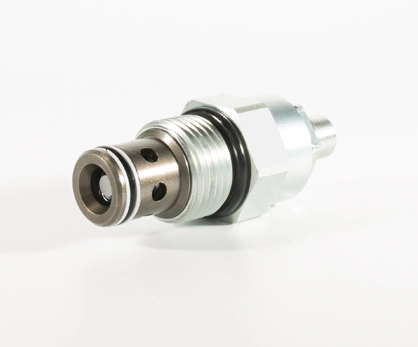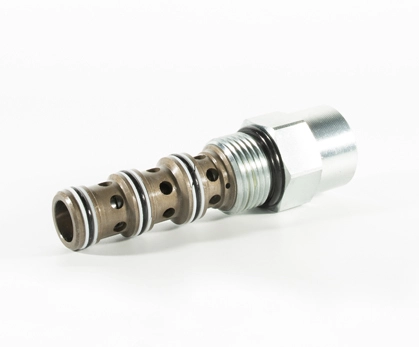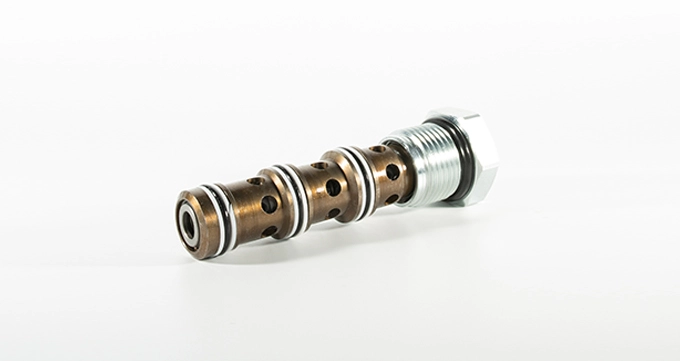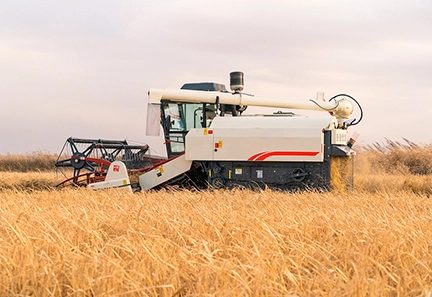How Does Hydraulic Flow Splitter Work?
A hydraulic flow splitter, also known as a hydraulic flow divider, is a device used in hydraulic systems to divide a single input flow of hydraulic fluid into multiple output flows, while maintaining a consistent ratio between the outputs. This device is essential in various hydraulic applications where precise control of multiple hydraulic actuators or functions is required. Let's take a look how hydraulic flow dividers work.
Input Flow: The hydraulic flow splitter is connected to a single source of hydraulic fluid, usually a pump or another hydraulic power source. This input flow carries pressurized hydraulic fluid that needs to be distributed to multiple hydraulic circuits or components.
Internal Mechanism: Inside the hydraulic flow splitter, there are typically precision-engineered components such as gears, spools, or rotary valves. The specific design may vary depending on the types of hydraulic cartridge valves being used.
Flow Division: As the hydraulic fluid enters the flow splitter, the internal mechanism divides the flow into multiple separate paths, leading to the output ports. The key feature of a hydraulic flow splitter is that it distributes the flow in a consistent ratio among the output ports. For example, if you have a 50/50 hydraulic flow splitter, it will ensure that each output port receives half of the input flow.
Proportional Control: Hydraulic flow splitters often allow for adjustment of the flow distribution ratio. This can be achieved by changing the position of the internal mechanism or by using flow control valves in each output line. This feature provides flexibility in controlling the speed or force of hydraulic actuators connected to the output ports.
Pressure Compensation: Many hydraulic flow splitters incorporate pressure compensation mechanisms to ensure that each output port receives the same pressure, even if the load on the hydraulic system varies. This helps maintain consistent performance of hydraulic components connected to the splitter.
Applications: Hydraulic flow splitters are used in a wide range of applications, including agriculture (to control multiple hydraulic cylinders on farming equipment), construction machinery (to synchronize the movement of multiple hydraulic actuators), and industrial automation (to control multiple functions in manufacturing processes).
2 Way, 3 Way, 4 Way Flow Divider
2-Way Flow Divider:
Number of Output Ports: A 2-way flow divider has two output ports.
Flow Distribution: In a 2-way flow divider, the input flow is divided into two equal output flows. Each output port receives half of the input flow. This is often referred to as a 50/50 flow distribution.
Common applications for 2-way flow dividers include scenarios where you need to control two hydraulic cylinders or actuators with equal force or speed, such as in some agricultural equipment or industrial machinery.
3-Way Flow Divider:
Number of Output Ports: A 3-way flow divider has three output ports.
Flow Distribution: In a 3-way flow divider, the input flow is divided into three output flows. The flow distribution is typically equal, with each output port receiving one-third of the input flow, resulting in a 33/33/33 distribution.
3-way flow dividers are commonly used in applications where you need to control three hydraulic cylinders or actuators with equal flow, such as in some material handling equipment or hydraulic presses.
4-Way Flow Divider:
Number of Output Ports: A 4-way flow divider has four output ports.
Flow Distribution: In a 4-way flow divider, the input flow is divided into four equal output flows. Each output port receives one-fourth of the input flow, resulting in a 25/25/25/25 distribution. Components for these precise flow dividers are often sourced from a specialized hydraulic valve factory, ensuring high-quality and consistent performance.
4-way flow dividers are used when you need to control four hydraulic cylinders or actuators with equal flow, often seen in applications like certain types of construction machinery, where synchronization of multiple functions is required.
Hydraulic Flow Divider Gear Type VS Cartridge-type
Gear-Type Hydraulic Flow Divider:
Design: Gear-type hydraulic flow dividers use precision-engineered gears to divide the input flow into multiple output flows. The gear sizes and arrangement determine the flow distribution ratio.
Flow Distribution: Gear-type dividers typically provide fixed flow distribution ratios that are set during manufacturing. These ratios can be adjusted by changing the gear sizes or positions, but this often requires disassembling the unit.
Flexibility: They offer limited flexibility in changing the flow distribution ratio on the fly and may require manual adjustments.
Applications: Gear-type flow dividers are commonly used in applications where a consistent and fixed flow ratio is sufficient, such as in some industrial machinery and construction equipment.
Maintenance: Maintenance of gear-type flow dividers involves regular inspection, lubrication, and possible replacement of gears or components if wear occurs.
Cartridge-Type Hydraulic Flow Divider:
Design: Cartridge-type hydraulic flow dividers use modular cartridges that can be easily inserted or removed from a manifold block. Each cartridge typically contains flow control elements, such as spools or orifices.
Flow Distribution: Cartridge-type dividers offer greater flexibility in adjusting the flow distribution ratio because cartridges with different flow control elements can be swapped in and out of the manifold block.
Flexibility: They allow for on-the-fly adjustments of flow distribution ratios without the need for disassembly. This makes them suitable for applications where dynamic control is required.
Applications: Cartridge-type flow dividers are often used in applications where the flow distribution needs to be adaptable, such as in mobile hydraulic systems, forestry equipment, and agricultural machinery.
Maintenance: Maintenance of cartridge-type flow dividers mainly involves inspecting and replacing cartridges as needed. This can be done without disassembling the entire unit.

 English
English 日本語
日本語 français
français Deutsch
Deutsch русский
русский Español
Español italiano
italiano português
português Türkçe
Türkçe Suomi
Suomi norsk
norsk
